The myth of the French Collapse in WW2
Reflections on Dunkirk
Some popularly forgotten elements of the events surrounding the Dunkirk evacuation and the fall of France in 1940
With Christopher Nolan's highly anticipated 'Dunkirk' hitting cinemas this weekend, some facts surrounding the events of that epic evacuation sometimes deserve a bit more press.
One of the most irritating injustices from a French historians' point of view is how the French soldiers who fought and died in 1940 have had their memory sullied by the narrative of the so-called 'collapse' against the German forces. It is often popularly forgotten that despite being isolated, the French continued to fight against all odds for another month after Dunkirk. Their resistance would continue of course by other means even after official surrender on June 25th. Despite defeat in June 1940, tenacious French resistance made Dunkirk possible.
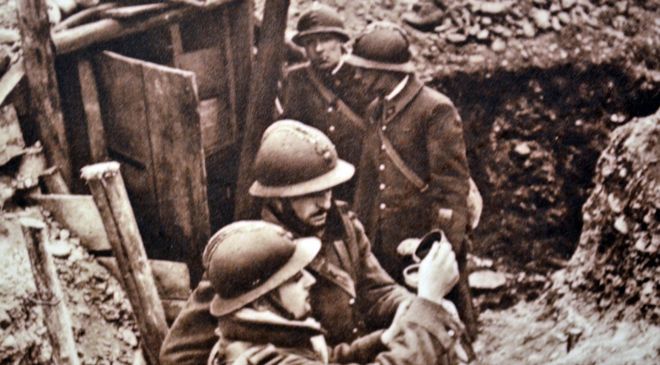 |
| image courtesy of BBC News |
It is well known that the French, along with the British, Belgians and Dutch were caught by surprise by the speed and direction of the German thrust in May 1940. The German armored movement through the Ardennes forest and their bypassing of the fortified Maginot Line pretty much put paid to any real prospect of winning the war in France. The Allies were outflanked and split in half. Southern French forces became preoccupied with the threat of an Italian attack (which did indeed occur once Mussolini realised the French were losing ), another oft-forgotten fact. Allied commanders did not understand how to co-ordinate planes and tanks in the same way German commanders did ( Even Hitler, like the Allies, had trouble understanding that tanks were the new cavalry, and were not effective if used as slow moving mobile fortresses to accompany infantry - his battles with dynamic General Heinz Guderian are well documented in the latters auto-biography 'Panzer Leader'). Whilst the German thrust through the Ardennes may have decided the ultimate outcome of the battle for France, the Allies could influence whether the subsequent events would be a complete disaster or a retreat that might offer some prospect of an eventual fightback.
The German Panzer tanks and airplanes of World War Two and their use of 'Blitzkrieg' have become famous. What is often forgotten in the popular imagination is how good some of the Allied planes and tanks were, and how conversely the German Army remained surprisingly reliant on horse transport. The image of an unstoppable mechanised German Army against an old fashioned Allied Army is an incorrect one. If the Allies had more of their best tanks and planes, and had they deployed properly, the outcome may well have been different. In particular, the British Matilda and French Somua and B1 tanks gave Panzers such a drubbing on several occasions that the Panzers subsequently held back from racing to Dunkirk - and gave the allies the breathing space they needed for evacuation. Heavy allied tanks were better armored and better armed than the fast, but ultimately lightweight Panzers. It was only later in the war that the Germans developed monsters like the Tiger. For now, their most numerous tank was the Panzer II ; a light tank often armed with little more than a 20mm cannon. Even the Panzer III, a relatively large and heavy tank, did not have the armour and firepower that could overcome an allied tank one on one. The Panzer III was fast and manouverable however, and packs of them could overcome outnumbered individuals if they managed to isolate them.
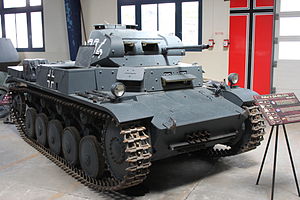 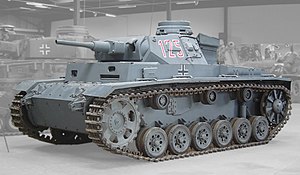 | |
| Panzer II and III |
It is usually well known that Hitler allowed his land forces to halt, and this gave the Allies time at Dunkirk. What is less well known is that the reason for this order was a vicious counter-attack by Allied tanks at Arras ; a battle that showed the real potential of Allied tanks, but was too little too late. Later, captured Somuas, B1s and Matildas were effectively used by the Germans on the Russian front. If only the Allies had made more of them and they had had more air support...
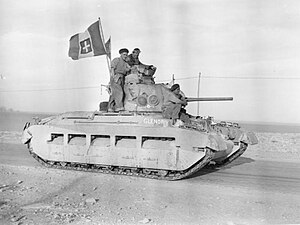 |
| The British Matilda Tank, Queen of the Desert ( here with a captured Italian flag ). |
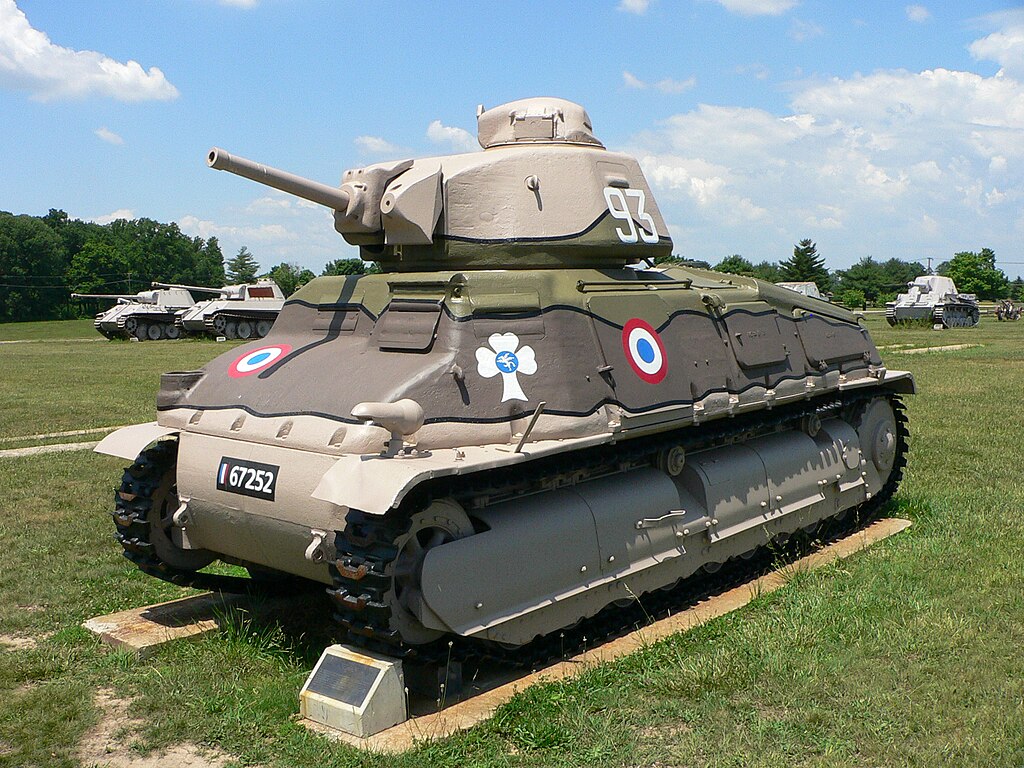  |
| The French Somua S35 and B1 |
In one notable engagement, a handful of British Matildas tore though a German division, seemingly invincible, and were only stopped by a quick thinking German commander who ordered his men to lower their 88mm anti-aircraft guns and use them as anti-tank guns. His name was Erwin Rommel. He later became famous for using this tactic in the desert, but it was born of desperate necessity in France 1940 as he faced superior allied tanks.
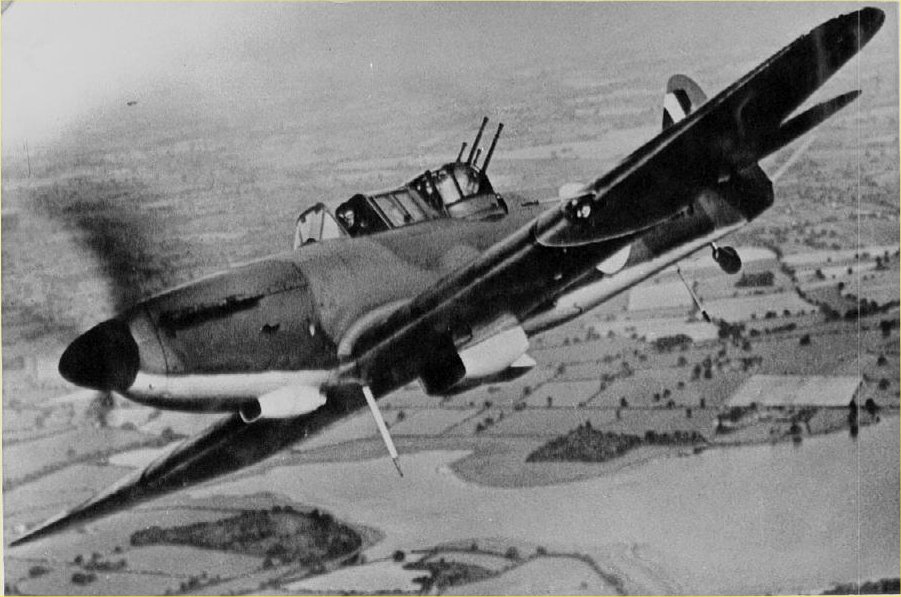 |
| The British fighter the Boulton Paul Defiant ; defiantly shooting backwards as it flees |
Of course, arguably the most vital element of the German success in 1940 was the Luftwaffe. Unlike with troops and tanks, this was one area where the Germans had a crucial numerical advantage. The close support of the Stuka dive-bombers and their ability to knock out Allied command posts was particularly devastating. Yes, the British had some disasters like the Boulton Paul Defiant that could only shoot backwards ( something I feel only the British could think would be a good idea ) , but there was real quality too. As with tanks, the Allies had some real assets, but they were not numerous enough and not effectively used. Whilst the Supermarine Spitfire has become ingrained in the popular imagination, the Hawker Hurricane was just as effective in most respects and with its wooden frame could sustain more damage. In the later Battle of Britain, the Hurricane would take down as many enemy fighters as the Spitfire. The French likewise had a capable fighter in the Morane ( a little under-powered and armed, but nonetheless a modern fighter with potential ). Again, had there been more and had they been more effectively deployed who knows what might have been. Early losses due to 'surprise' attacks on the French airfields seem to have been decisive.
 | |||||||||||
| The Hawker Hurricane and French Morane 406 ; both a match for German fighters if well piloted. |
Ultimately, the opening of World War Two demonstrated the new importance of speed and mobility given the new technology, and it was tactically and strategically that the Allies failed. The German commanders were fast, flexible and coordinated ( their soldiers even boosted with stimulant drugs) ; the Allies very much the opposite. Nothing could speak more to this than the Allies still relying on telephone wires rather than radio, and that when the French Supreme Commander finally planned a counter-attack, he did not even consult his British counter-part! Inertia and disorganisation by bad leadership defeated the Allied troops as much as the Germans did. The allies failed with their strategy and tactics - not their courage or tools per se. As is probably often the case with such large conflicts, planning, leadership and logistics counted for a lot.
The collapse of the Allies was not inevitable and French lack of coordination with partners certainly played a key role. But there can be no doubting the personal courage of the people who resisted the Nazis in 1940, least of all the French soldiers, even when their top leadership failed them. Their stubborn resistance at the Siege of Lille in particular (where 40,000 French and 50 tanks faced 160,000 Germans and 800 tanks) allowed many more Allied soldiers to reach Dunkirk. These evacuated British soldiers from Dunkirk later formed the basis of the Army that was to give the Germans such a headache in North Africa and launch the invasion of Sicily then Italy.
This blog post was inspired by the BBC article at http://www.bbc.com/news/magazine-32956736
And spending way too much time playing World of Tanks and similar video games.


Comments
Post a Comment